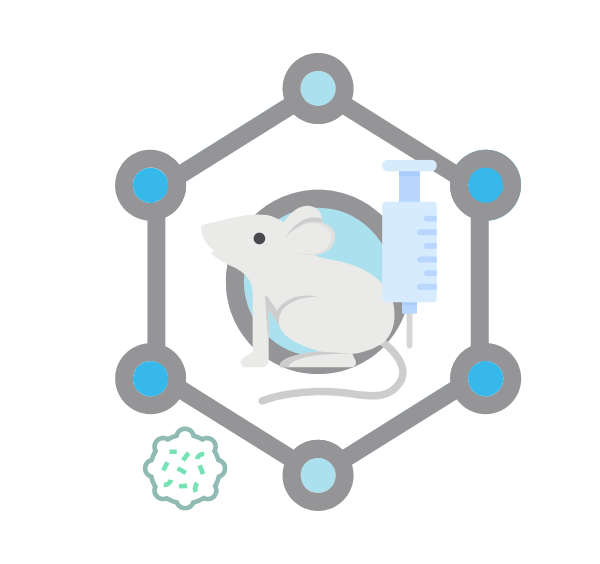
Genetically humanized mice are specially engineered rodents that carry human genes, cells, tissues, or organs. These mice are designed to better mimic human physiology, which makes them invaluable tools for studying human diseases such as cancer.
Oncology research has historically faced challenges in translating findings from animal models to humans due to species-specific differences in genetics and immune systems. Humanized mice offer a more accurate representation of human biology, allowing for deeper insights into the mechanisms of cancer development, progression, and response to therapies.
How Researchers Use Humanized Mouse Models
One of the most significant applications of humanized mice is in drug development. These mice can be engrafted with patient-derived tumor samples to test the efficacy and safety of new anticancer drugs in a more clinically relevant setting. This process can help identify the most promising drug candidates and remove friction from the drug development pipeline.
Another important application of humanized mice is in the study of the immune system. Humanized mice possess a human-like immune system, which supports investigations of the complex interactions between cancer cells and the immune system, leading to a better understanding of cancer immunology. These insights can pave the way for the development of innovative immunotherapies that target specific components of the immune system to fight cancer.
Additionally, humanized mice can be used to study tumor growth and metastasis, which are crucial aspects of cancer progression. By closely mimicking the human tumor microenvironment, these mouse models allow for more accurate observations of how cancer cells spread to other parts of the body and how different factors, such as gene mutations and tumor heterogeneity, contribute to this process. This knowledge lays the groundwork for developing more effective strategies for early detection, intervention, and treatment of metastatic cancer.
Selecting the Right Mouse for Humanization
When choosing a mouse for humanization, there are several factors to consider in order to create a model that best represents the desired human biology and achieves the research objectives. First, the genetic background of the mouse is a critical consideration. It is essential to select a strain with a well-characterized genome that is compatible with the human genes or cells being introduced. Commonly used strains for humanization include NOD/SCID, NSG, and NOG mice.
Another factor to consider is the age and sex of the mice. Depending on the research question and the type of cancer being studied, it may be necessary to select mice of a specific age or sex to more accurately model human disease progression and response to treatment.
Lastly, the immune status of the mice is a crucial aspect of the selection process. Immunodeficient mice are often used in humanization because they allow for the successful engraftment of human cells and tissues without the risk of rejection. However, some studies may require a partially or fully functional human immune system, in which case, mice that have been genetically engineered to express human immune components are necessary.
Humanized Mice vs. Chimeric Humanized Mice
Chimeric humanized mice are created by introducing human cells, such as hematopoietic stem cells (immature cells that can grow into any type of blood cell), into immunodeficient mice. These mice develop a human-mouse chimeric immune system, with a mixture of both human and mouse immune cells.
Humanized mice typically have human genes integrated into their genome, while chimeric humanized mice have human cells introduced into their bodies, resulting in a mixed immune system. Additionally, humanized mice can possess a fully human immune system, whereas chimeric humanized mice have a human-mouse hybrid immune system.
Advantages of Using Humanized Mice in Clinical Research
Humanized mice offer several advantages over traditional animal models in clinical research, particularly in the field of oncology. These advantages make them invaluable tools for advancing our understanding of cancer biology and developing novel treatments.
Humanized mice provide a more accurate representation of human biology, allowing for better predictions of how humans will respond to a specific drug or therapy. This improved translatability helps in the identification of the most promising drug candidates, reducing the risk of failure in later stages of clinical trials.
The presence of a human-like immune system in humanized mice enables researchers to study the complex interactions between cancer cells and the immune system. This is particularly important for developing immunotherapies, which target specific components of the immune system to fight cancer. Humanized mice can provide crucial insights into the mechanisms of action and potential side effects of these therapies.
Humanized mice also help reduce the reliance on other animal models or human subjects in research, addressing some ethical concerns associated with animal testing and human clinical trials. By providing a more accurate representation of human biology, humanized mice can help minimize the number of animals and human subjects needed for research.
Best Practices for Humanizing Mice in Oncology Research
To ensure the success and validity of oncology research using humanized mice, it is crucial to follow best practices for creating and maintaining these models.
Ensuring Genetic Stability
Regularly monitoring and maintaining the genetic stability of humanized mice is essential to avoid unwanted genetic drift or loss of humanization.
Monitoring Immune System Function
Regular assessment of the immune system function in humanized mice is critical to ensure that the desired level of human immune system representation is maintained throughout the study. This can be achieved by conducting routine immune profiling and functional assays.
Conducting Ethical Experiments
Adhering to ethical guidelines and regulations for animal experimentation is paramount. Researchers should follow the principles of the 3Rs (Replacement, Reduction, and Refinement) to minimize the use of animals in research and ensure their welfare
LIDE delivers innovations in oncology translational research and immuno-oncology. Contact Global Vice President, Josh Caggiula today to learn more about our first-class research capabilities.